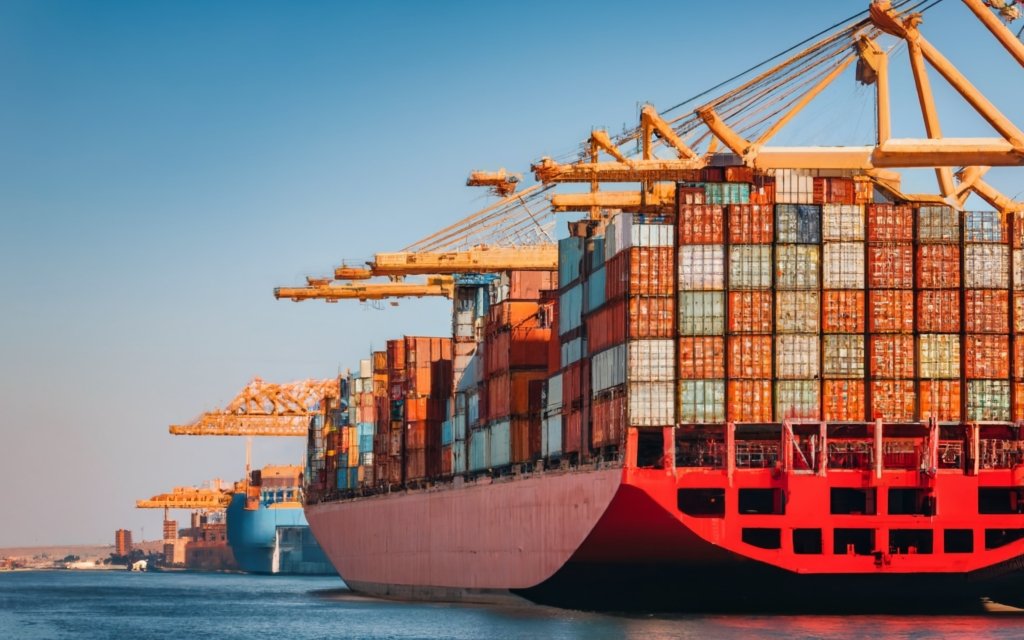Cheap Freight shipping from China is a vital part of global trade and e-commerce. China is the world’s largest exporter of goods, and many businesses rely on its products and materials for their operations. However, freight shipping from China can also be costly, time-consuming, and complex. In this article, we will explore some of the challenges and opportunities of freight shipping from China and share some insider strategies and best practices for cost-effective and efficient freight shipping.
Understanding Freight Shipping from China

Freight shipping is the process of transporting goods by sea, air, or land. Freight shipping from China involves several steps and parties, such as:
- Suppliers: The manufacturers or sellers of the goods in China.
- Freight forwarders: The intermediaries that arrange the transportation and logistics of the goods from China to the destination country.
- Customs brokers: The agents that handle the customs clearance and documentation of the goods at the origin and destination ports.
- Carriers: The companies that provide the actual transportation of the goods, such as shipping lines, airlines, or trucking companies.
- Warehouses: The facilities that store and distribute the goods before or after the transportation.
- Buyers: The customers or recipients of the goods in the destination country.
China Freight shipping from China can be affected by various factors, such as:
- Shipping volume: The amount and size of the goods to be shipped. Shipping volume can affect the shipping cost, mode, and speed.
- Shipping mode: The method of transportation, such as ocean, air, or land. Shipping mode can affect the shipping cost, speed, and reliability.
- Shipping route: The path and distance of the transportation, such as direct or transshipment. Shipping route can affect the shipping cost, speed, and risk.
- Shipping season: The time of the year when the shipping demand is high or low. Shipping season can affect the shipping cost, availability, and congestion.
- Shipping regulations: The rules and requirements of the origin and destination countries, such as tariffs, taxes, duties, quotas, licenses, and inspections. Shipping regulations can affect the shipping cost, time, and compliance.
The Benefits of Cost-Effective Freight Shipping

Cheap Freight shipping from China can offer many benefits for businesses, such as:
- Access to a large and diverse market: China is the world’s leading producer and exporter of many goods, such as electronics, clothing, furniture, toys, machinery, and more. By shipping from China, businesses can access a wide range of products and suppliers at competitive prices and quality.
- Lower production and labor costs: China has a large and skilled workforce, as well as advanced manufacturing and infrastructure. By shipping from China, businesses can lower their production and labor costs, and increase their profit margins and competitiveness.
- Faster delivery and turnaround time: China has a well-developed and efficient transportation and logistics network, as well as multiple ports and airports. By shipping from China, businesses can reduce their delivery and turnaround time, and meet their customer expectations and deadlines.
However, freight shipping from China can also pose some challenges and risks, such as:
- Higher shipping and logistics costs: China is a large and distant country, and shipping from China can involve multiple modes, routes, and parties. By shipping from China, businesses can incur higher shipping and logistics costs, which can eat into their profits and budgets.
- Longer transit and lead time: China is a busy and congested country, and shipping from China can face delays and disruptions due to weather, traffic, customs, or other factors. By shipping from China, businesses can experience longer transit and lead time, which can affect their inventory and cash flow.
- More complexity and uncertainty: China is a dynamic and changing country, and shipping from China can encounter changes and challenges in regulations, policies, demand, supply, or quality. By shipping from China, businesses can face more complexity and uncertainty, which can impact their planning and decision-making.
Therefore, it is important for businesses to find ways to optimize and streamline their freight shipping from China, and achieve cost-effectiveness and efficiency.
Insider Strategies for Cost-Effective Freight Shipping from China

Here are some insider strategies that can help businesses save money and time on shipping from China:
- Choosing the right freight shipping method: Depending on the shipping volume, mode, route, and season, businesses can choose the most suitable and economical freight shipping method for their goods. For example, for large and heavy shipments that are not urgent, ocean freight can be a cheaper and greener option than air freight. For small and light shipments that are time-sensitive, express freight can be a faster and more reliable option than standard freight. For shipments that are in between, LCL (less than container load) or FCL (full container load) can be a flexible and cost-effective option that allows businesses to share or fill a container with other shippers.
- Negotiating with freight forwarders and suppliers: Freight forwarders and suppliers are key partners in freight shipping from China, and businesses can negotiate with them to get the best rates and terms for their shipments. For example, businesses can compare and contrast different freight forwarders and suppliers, and leverage their volume, frequency, and loyalty to get discounts and incentives. Businesses can also negotiate on the incoterms, which are the rules that define the responsibilities and costs of the seller and the buyer in freight shipping. For example, businesses can choose FOB (free on board), which means the seller pays for the transportation and customs clearance of the goods until they are loaded on the ship, and the buyer pays for the rest. Or, businesses can choose DDP (delivered duty paid), which means the seller pays for everything until the goods are delivered to the buyer’s door.
- Leveraging technology for efficient freight shipping: Technology can be a powerful tool for enhancing and simplifying freight shipping from China, and businesses can leverage technology to improve their visibility, communication, and automation. For example, businesses can use online platforms and apps to compare and book freight shipping services, track and trace their shipments, manage their documents and payments, and access real-time data and insights. Businesses can also use cloud-based software and systems to integrate and coordinate their freight shipping processes, collaborate and communicate with their partners, and optimize and streamline their workflows and operations.
Avoiding Common Pitfalls in Freight Shipping from China

Here are some common pitfalls that can hamper and harm freight shipping from China, and how to avoid them:
- Inaccurate or incomplete documentation: Documentation is essential for freight shipping from China, as it proves the identity, ownership, value, and compliance of the goods. However, documentation can also be a source of errors and delays, if it is inaccurate or incomplete. To avoid this pitfall, businesses should ensure that they have all the required and relevant documents for their shipments, such as invoices, packing lists, bills of lading, certificates of origin, and customs declarations. Businesses should also ensure that their documents are accurate and consistent, and match the actual goods and information. Businesses should also check and verify their documents with their freight forwarders and suppliers, and submit them in advance and on time.
- Poor or insufficient packaging: Packaging is important for freight shipping from China, as it protects and preserves the goods during the transportation and handling. However, packaging can also be a source of damage and waste, if it is poor or insufficient. To avoid this pitfall, businesses should ensure that they use the appropriate and adequate packaging materials and methods for their goods, such as boxes, pallets, crates, wraps, tapes, and labels. Businesses should also ensure that their packaging is sturdy and secure, and conforms to the standards and regulations of the origin and destination countries. Businesses should also ensure that their packaging is optimized and minimized, and avoids excess weight and space.
- Lack of communication or coordination: Communication and coordination are crucial for freight shipping from China, as they enable and facilitate the smooth and seamless movement and delivery of the goods. However, communication and coordination can also be a source of confusion and conflict, if they are lack or poor. To avoid this pitfall, businesses should ensure that they communicate and coordinate effectively and efficiently with their freight forwarders and suppliers, and establish clear and mutual expectations and agreements. Businesses should also ensure that they communicate and coordinate regularly and proactively with their partners, and update and inform them of any changes or issues. Businesses should also ensure that they communicate and coordinate with their customers, and provide them with accurate and timely information and service.
Best Practices for Cost-Effective Cheap Freight Shipping

Here are some best practices that can help businesses achieve cost-effectiveness and efficiency in freight shipping from China:
- Plan and prepare ahead: Planning and preparing ahead can help businesses avoid surprises and problems, and take advantage of opportunities and solutions. Businesses should plan and prepare their freight shipping from China in advance, and consider factors such as shipping volume, mode, route, season, and regulations. Businesses should also plan and prepare their budgets, schedules, and contingencies, and anticipate and mitigate potential risks and challenges.
- Research and review options: Researching and reviewing options can help businesses make informed and smart decisions, and find the best fit and value for their needs and goals. Businesses should research and review their freight shipping options from China, and compare and contrast different freight forwarders, suppliers, carriers, and services. Businesses should also research and review the market conditions and trends, and monitor and evaluate the performance and feedback of their partners and providers.
- Optimize and streamline processes: Optimizing and streamlining processes can help businesses improve their productivity and profitability, and reduce their costs and waste. Businesses should optimize and streamline their freight shipping processes from China, and adopt best practices and standards for their documentation, packaging, communication, and coordination. Businesses should also optimize and streamline their inventory and supply chain management, and align and integrate their freight shipping with their business strategy and operations.
Finding Reliable Cheap Freight Shipping Partners

Finding reliable cheap freight shipping partners can help businesses ensure the quality and safety of their goods, and enhance their customer satisfaction and reputation. However, finding reliable freight shipping partners can also be challenging and time-consuming, as there are many factors and criteria to consider and evaluate. Here are some tips and resources that can help businesses find reliable freight shipping partners from China:
- Ask for referrals and recommendations: One of the easiest and most effective ways to find reliable freight shipping partners is to ask for referrals and recommendations from other businesses, especially those that have experience and success in shipping from China. Businesses can ask their peers, colleagues, friends, or industry associations for their opinions and feedback on their freight shipping partners, and learn from their best practices and lessons learned. Businesses can also ask their freight forwarders and suppliers for their suggestions and referrals, as they may have established and trusted relationships with other cheap freight shipping partners.
- Check for credentials and certifications: Another important way to find reliable freight shipping partners is to check for their credentials and certifications, which can indicate their professionalism and competence. Businesses can check for the credentials and certifications of their freight shipping partners, such as their business licenses, registration numbers, tax numbers, and insurance policies. Businesses can also check for the certifications of their freight shipping partners, such as ISO, IATA, FIATA, NVOCC, and FMC, which can demonstrate their compliance and standards in freight shipping.
- Review ratings and reviews: A third useful way to find reliable freight shipping partners is to review their ratings and reviews, which can reflect their performance and reputation. Businesses can review the ratings and reviews of their freight shipping partners, such as their customer ratings, testimonials, case studies, and awards. Businesses can also review the ratings and reviews of their freight shipping partners on online platforms and directories, such as Alibaba, Freightos, Shipa Freight, and Freightnet, which can provide objective and comprehensive information and feedback on their freight shipping partners.




